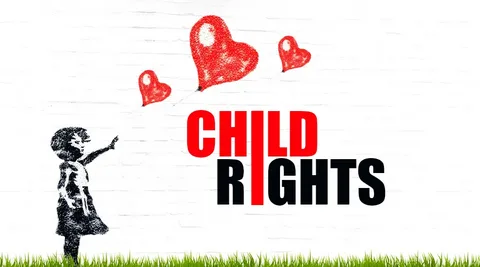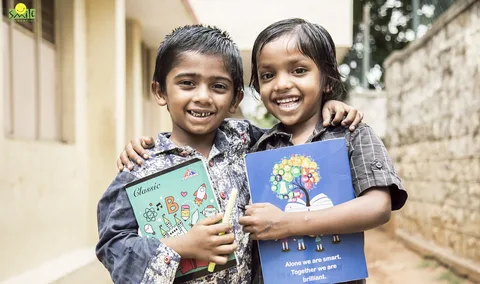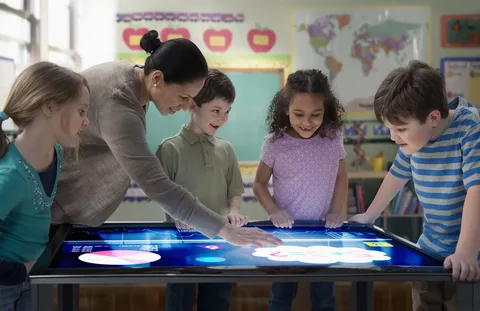Learn about the many legal frameworks, different kinds of rights(Children Rights in India), typical violations, intervention tactics, and motivational tales of perseverance that pertain to children’s rights in India in this all-inclusive book. Find out how groups can fight for the rights of children in danger and how stakeholders can help.
Table of Contents
Introduction To Children Rights in India
Concern for children’s rights is a major national priority in India. Protecting and nurturing a nation’s youth is essential to the progress of that civilization since they are its most valuable resource. This article examines children’s rights in India from every angle, discussing their relevance, obstacles, and the legal protections they have.

Define Children’s Rights
All people under the age of eighteen have a variety of rights that are collectively known as children’s rights. Among these rights are the following: the right to an education, healthcare, safety from exploitation, and a supportive environment that promotes their overall growth.
Relevance and Importance
In order to build a society that prioritizes fairness, compassion, and equality, it is crucial to safeguard children’s rights. We invest in our nation’s future and provide children the tools they need to become contributing members of society by making sure they have access to the resources they need.
Children Rights in India Legal Framework
Constitution of India
All Indian people, including children, are guaranteed specific fundamental rights by the country’s constitution. A number of laws and policies have their roots in these rights, which are meant to protect children.
Act of 2015 on Juvenile Justice (Care and Protection of Children)
Children who are in trouble with the law or who are in need of protection and care are laid forth in this act, together with the legal framework for their care, protection, and rehabilitation. A child-centered strategy is prioritized in order to guarantee their overall development.
Right to Education Act, 2009
All children between the ages of six and fourteen are required by law to attend public school at no cost to them. Equal access to high-quality education is one of its primary goals, along with the promotion of diversity and the closing of achievement gaps.
Types and Categories of Children’s Rights
Civil Rights
Children have the right to freedom of speech, association, and assembly as well as the right to be free from discrimination, all of which fall under the umbrella of civil rights.
Social and Economic Rights
A child’s physical and mental health are fundamental, and these rights cover things like getting enough food, housing, and medical treatment.
Protection Rights
Children have the right to be free from all types of violence, including but not limited to child labor and trafficking, as well as from abuse, neglect, and exploitation.
Symptoms and Signs of Violations Of Children Rights in India

Child Labor
Child labor is a major problem in India; it deprives kids of their right to an education and a childhood free from danger, among other human rights abuses.
Child Marriage
Especially in rural communities, the practice of child marriage is pervasive and prevents girls from having the chance to develop as individuals.
Trafficking and Exploitation
Slavery, abuse, and other types of violence are commonplace in trafficked and exploited children, especially those from disadvantaged backgrounds.
Children Rights in India Causes and Risk Factors
Poverty
As a result of families’ struggles to satisfy basic requirements, child work or early marriage are often resorted to as a means to reduce financial obligations; poverty is thus a major driver of children’s rights breaches.

Lack of Awareness
Persistently damaging behaviors and a lack of understanding of children’s rights are caused by entrenched socio-cultural norms, which in turn hinder attempts to empower and safeguard children.
Inadequate Legal Enforcement
Children are susceptible to exploitation and abuse due to the lack of efficient enforcement mechanisms and corruption, even if laws and regulations are in place.
Children Rights in India Diagnosis and Intervention
Child Welfare Committees
By serving as a forum for the reporting and redress of grievances, the facilitation of rehabilitation and support services, and the overall addressing of child rights abuses, Child Welfare Committees (CWCs) are vital in this effort.
Child Helplines
A kid hotline is a lifeline for a troubled youngster; it’s a safe place where they may call for assistance in an anonymous and easily accessible manner in the event of abuse, neglect, or exploitation.
Treatment Options and Rehabilitation
Rehabilitation Centers
Shelter, counseling, education, and vocational training are just a few of the many services that rehabilitation institutions offer to children who have been rescued from abusive or exploitative environments.
Education and Skill Development
In addition to improving their future chances, providing children with opportunities to learn and grow gives them the capacity to end their own cycle of poverty and exploitation.
Preventive Measures and Advocacy

Community Outreach Programs
Fostering a culture of responsibility and support, community outreach initiatives educate the public about children’s rights and encourage community involvement in protecting children’s well-being.
Advocacy and Policy Reform
By bringing attention to structural causes of child rights breaches, advocates hope to persuade lawmakers to enact measures that better safeguard children.
Personal Stories and Case Studies
My Name Is Aarav, and I Will Free You From Bonded Labor
They rescued 12-year-old Aarav from a brick kiln where he was working for pitiful earnings as a slave. He was able to regain his childhood and follow his aspirations with the support of a local NGO that gave him schooling and helped him.
My Name Is Maya, and I Will Lead You Away From Child Marriage
A talented young girl named Maya almost avoided her family’s plan to have her married off against her will. She defied social conventions and empowered herself by enrolling in school and pursuing her education, made possible via the involvement of a child rights group.
Expert Insights and Recommendations
Dr. Rajesh Kumar is an advocate for children’s rights.
“Governments, civic society, and communities must work together to guarantee the safety and welfare of children. To build a world where kids can succeed, we need to put a premium on healthcare, education, and social safety nets.
Conclusion of Children Rights in India
Every community has a responsibility to look out for its youngest and most defenseless members, and children are no exception. Our moral commitment is served and the groundwork is laid for a better and more fair future for generations to come when we protect their rights and invest in their welfare.





